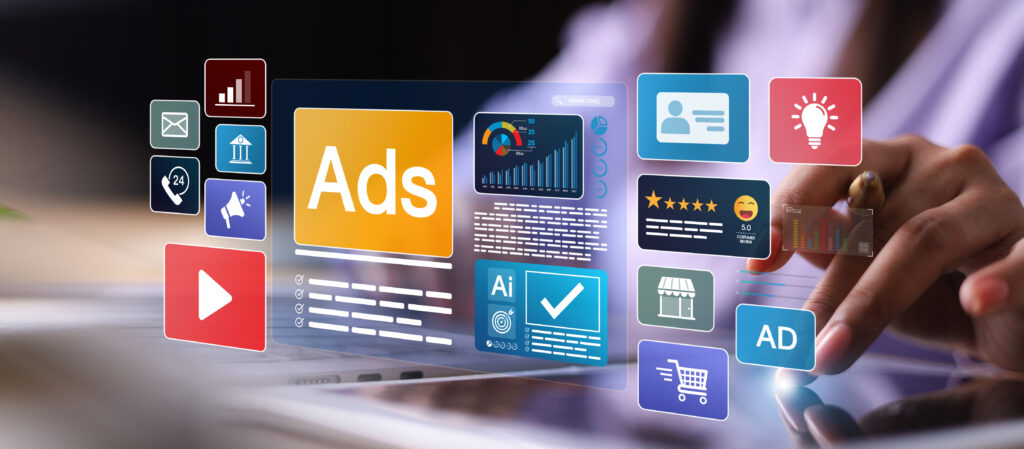
When first starting to build a social media presence for your brand, it’s important to avoid certain activities, while focusing your efforts on attracting followers. Not just any followers will do, however. Without targeted fans, you won’t get the results you’re looking for.
But, building a Facebook audience isn’t just about what you post on the page, and how often you post. Yes, those things play a role, but there are certain things you can to turn an audience away, even as you try to attract them.
Let’s take a look at what you should and shouldn’t do as you look to start or grow your Facebook following.
Overview
Do: Have a Plan for Content in Advance
As tempting as it may be to create a page for your brand and go to town, that’/s not the way you want to handle it. Think before you post. Before you post any status updates, ask yourself about the purpose it serves.
It’s a good idea to create a social content calendar – something similar to a blog editorial calendar, that you use for all the content on your social media channels. This way you can be sure you have a good balance of promotional content, with informational and useful content for your fans.
The more you plan out in advance, the less you have to worry about running into a time where there is little to no content available to post – but, if you plan too much out in advance, you may not be able to take advantage of current events that are important for your industry. And, you don’t want your audience thinking you’re running everything on autopilot, because they want to know you’ll respond to them when they need you to.
Don’t: Broadcast Promotional Material All the Time
According to a survey from Sprout Social, 46% of people say they will unfollow a brand on social media for posting too many promotional messages. While you want to get sales and bring leads from social over to your website, there is a certain way to go about it without upsetting your audience. They expect some promoti0onal material, because they wouldn’t follow your brand if they weren’t interested in what you have to offer. But, too much promotion and you will lose fans.
Follow the social media 80/20 rule. Out of every 10 posts you share on social media, only two of them should be about your business – and the other eight should be information that’s relevant to your audience, and the products you sell or the services you offer.
Headphone brand Skullcandy has an active Facebook page. They share status updates about their products, like this one:
But they also share music news and information, because they know their fans want to see that, too. That way, everything they share is somewhat related to the product they sell, without blatantly selling it.
Tiny Prints is another brand that knows how to do Facebook right. Here’s a promotional post:
And here’s another, but it’s not as blatant because it features a discount code – valid for one day only.
This post shows an example of how you can use TinyPrints products in your overall décor. This is an example nursery a customer used. It highlights the product, without saying “buy me!”
Do: Invest in Targeted Advertising to Grow Your Fan Base
Relying on completely organic fan growth is both difficult and time consuming. Facebook makes it easy to advertise your page to a highly specific group of people. You can choose based on a number of demographics, including: gender, marital status, geographic location, salary range, and hobbies and interests.
The catch is, you don’t want to go so targeted you narrow yourself down to a small section of users, because the cost per fan will be way too high. But, you don’t want to be too loose, and get a bunch of likes that aren’t as targeted as you’d like them to be. You should aim to keep your cost per fan as low as possible, but certain niches will cost more than others – and the more targeted you get, generally the more expensive each fan will become. It’s up to you to set the budget, but you should run the campaign for at least a week. Keep in mind that Facebook doesn’t set an end date, so if you’re not careful, you can end up with more fans than you expected – but spending way more money than you intended to.
If you’ve already got an established customer base, you can upload their email addresses or import your contacts from many popular email eservices. This will send them a suggestion to like your page on Facebook. While there’s no certainty they’ll follow through and click “like”, it helps get you started on the right foot.
Don’t: Buy Facebook Fans
There are a lot of websites out there advertising that they can get you targeted fans. Not only is Facebook against the practice, it’s just not a good idea. These likes, no matter how “targeted” they claim to be, won’t do anything to help you. You’ll get inflated numbers, sure, but those “fans” won’t be liking and commenting on your page. They won’t share your content. Many times, they are fake accounts, made for the purpose of getting paid to “like” the page.
This may not seem like a big deal, because you want to increase the perception of your page being well-liked. But, it has long-term negative effects on your page. Facebook considers the page engagement rate when the algorithms decide when (and where) to serve your page’s content, including your ads. So, if your page is inflated with fake likes, you’re shooting yourself in the foot, making it more difficult, and more costly to reach people in your target audience.
Do: Take Time to Reply to Messages
Nearly half of people, or 42%, expect a response from a brand on social media within one hour. 32% of them expect to get a response within 30 minutes. And, 57% of them have that same expectation time even outside of normal business hours. 25.1% of people say they following a brand to communicate with them. That’s what social is about – communication.
Facebook displays the page’s response metric as a badge for viewers to see. If you want your page to show “Very responsive to messages” You must have a response rate of 90% and a response time of 15 minutes over the last seven days.
Your response rate is the percentage of new messages to your page that get an initial response back from you on the same time. Response time is the average time it takes you to send those initial messages on that day.
The times are only based on the first reply in a conversation. Follow up messages sent within the same day are not counted. If you need to go away on vacation, set the page’s status to “away” so the response time is not negatively affected. The response time for those messages will be calculated once you set your page to available again. The use of Instant Replies and any messages marked as spam will not count toward response rate or time.
Don’t: Ignore When Fans Reach Out to You
The survey revealed 15.3% of people will unfollow a brand on social media when they don’t get a response to their messages. It’s hard to be available all the time, but you should aim to reply to all messages that come through on your Facebook page, and other social media channels as well.
Do: Inject Personality in Your Posts
Fans love it when you have some personality in your posts. Make sure the personality you put forward goes along with the brand image you are trying to project to your audience. The survey indicated 34.7% of people will unfollow your brand on social media for failing to have personality on your accounts – not just your Facebook page.
Don’t: Try Too Hard to Be Funny
If you’re trying to be funny and you’re not – you’re not going to get anywhere with you fans. This is especially true if humor is not appropriate for your brand. The survey showed 32.3% of people will unfollow a page for this reason. Of course, you’re free to experiment – it’s always worth it to see if something works. But, if you see that it’s not – stop trying it and move onto something else.
Do: Keep Things Relevant
Since you shouldn’t be constantly promoting your business all the time, but you must keep your profile active with updates, it’s important to share information that’s relevant to both your audience and your business. For instance, if you’re a kitchen and bathroom designer, you can post articles about how to choose the best paint colors, small renovations that can bring a big ROI when it comes time to sell your home, lighting, eco-friendly options, etc.
Don’t: Use Jargon and Slang
Your fans don’t like it when you use jargon and slang they can’t understand. In fact, 38.4% of people say they will unfollow a brand on social media for that reason. Don’t try so hard to get in touch with the Millennial market that you just make them mad. Just write with normal words and phrases – and talk to them with personality.
Do: Post Consistently
Post at least once a day on all the social media platforms you’re active on. The ideal posting schedule will vary from network to network, and the ideal posting frequency will vary from niche to niche. Obviously, brands covering news and current events will be expected to post more often than those that don’t.
Don’t: Get Too Quiet
If you don’t post often enough, you risk people unfollowing your brand on social media. 17.9% of survey respondents say they will stop following the brand. You don’t want to post all the time, because you could easily take up too much room in their feeds, but don’t go days or weeks without posting. And if you do, for any reason, don’t start posting again by flooding the feeds with posts in an attempt to compensate.
Keep the Social in Social Media
Social media should be considered a social tool, meant for two-way communication first and foremost. The social aspect should remain priority and promotions should always be secondary in your strategy. When you have the active engagement on your Facebook page, you’re fostering brand loyalty, creating brand ambassadors, who are out there championing for you with their friends and family.
When you make sales and promotion the priority, and make social interaction and engagement secondary, you’re falling into many of the habits that make people unfollow your page. The more you do this, the more audience you risk losing. And even if they haven’t bought from your company in the past, you can bet they’ll still share their experience with friends and family. It may or may not prevent people from becoming your customers in the long run, but it certainly starts you at a disadvantage.
Your Facebook page won’t go from a few fans today, to thousands of fans tomorrow, unless you’ve got a massive advertising budget. And even if you do have that kind of money behind an ad campaign, it’s not really the number of fans you want to focus on. You want to build engagement – post likes, comments, and shares. This kind of organic growth takes time. Don’t get frustrated or set expectations too high in the beginning.
How long have you had a Facebook page for your business? What goals are you working toward? Share your experience with me in the comments below.
Contact us today to get the conversation started!









